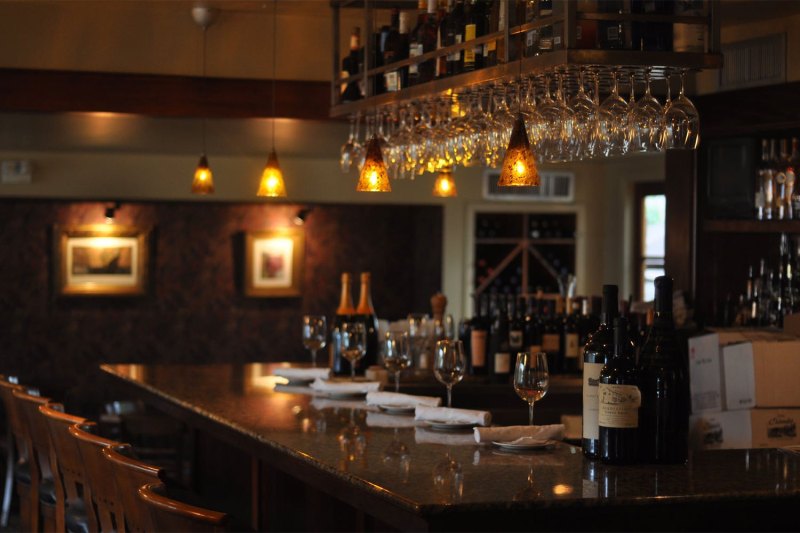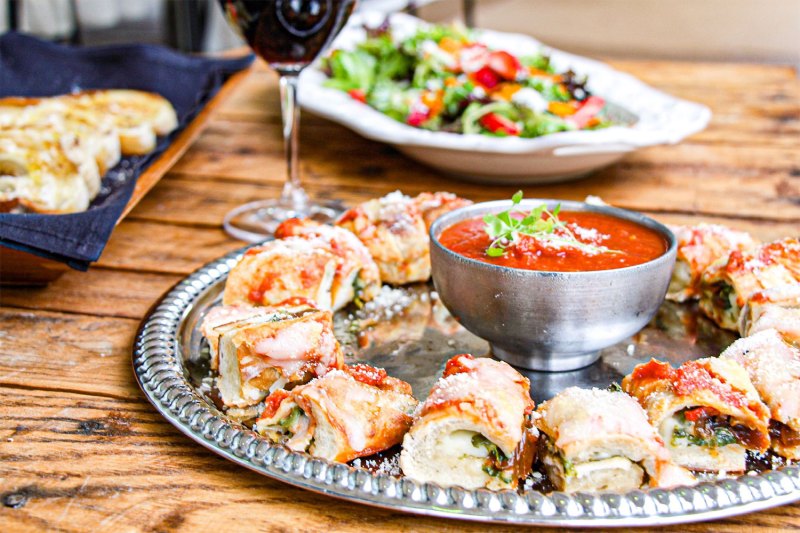Hispanic Heritage Month (September 15-October 15) exists as an opportunity for all Americans to celebrate the countless contributions made by our Hispanic population to every element of our culture, our economy, and our national identity. The list of industries that owe their success to Hispanic workers and innovators is a very lengthy one, and it’s reasonable to say that the restaurant and hospitality field are among the professional realms that have most directly and substantially benefited from their Hispanic workforces.
We had the opportunity to speak with a group of chefs and hospitality leaders who claim Hispanic heritage, and each one agrees that Hispanic employees play an integral role in the industry as a whole. In fact, as executive chef Tatiana Mora of Serenata and Zumo in Washington, D.C. puts it, “without the Hispanic force behind restaurants, hospitality as we know it today wouldn’t exist. We are a backbone of this industry.”
Hispanic cultures prioritize entertaining for family and loved ones, and that important focus easily translates to the restaurant world.
When asked about how his heritage informs his commitment to hospitality, prominent Houston, Texas chef (and James Beard Award winner) Hugo Ortega, who grew up in Mexico City and Puebla, told us that “food and entertaining are such large parts of the Hispanic culture. Hispanics gather to create feasts together on holidays, special occasions, and simply on weekends – we don’t need much of a reason to get together to enjoy a great meal and charlar (chat). This love for food and gathering translates well to the dining culture here in the U.S., and especially here in Houston, where we have a large and diverse Latin community who have opened restaurants to share dishes from their homelands and their own family kitchens.”

Co-chef and co-owner Rafael Esparza of Evette’s in Chicago, Illinois agrees with the idea that the act of sharing dishes and creating a warm and welcoming environment is an intrinsic part of Hispanic life, and he ascribes his personal commitment to hospitality to his own experiences as a first-generation American raised by a Mexican family: “Depending on what city you’re in, the Latinx makeup is different, but it’s integral no matter where you are. Chicago is primarily Mexican, Columbian, and Ecuadorian. The hospitality aspects of our cultures are pretty universal and are ingrained in us as little kids: Put something to eat and drink in front of your guest as soon as they walk in the door. It’s a natural fit because hospitality is in our bones. Our culture is rooted in taking care of other people before taking care of yourself. It’s undeniably an asset to have us as workers in this industry.”
For lead server Jose Portillo of La Vie in Washington, D.C., his Hispanic heritage gives him a leg up when it comes to connecting with coworkers and guests alike. “My cultural background informs the work I do today [through my] level of interaction. Latinos want to get to know others as complete human beings. They are aware that their co-workers have a life after work and are interested in knowing more about it. Small talk is our way of learning about the wants, needs, and feelings of others. Same goes for when we interact with a guest. We want to build a bond and a friendship that would allow us to know their wants and needs. We want to make sure that, while you are dining at the restaurant, you are being treated in an exceptional way. When you visit a Latino home, you are greeted by a bunch of smiling faces [and people who] want to shake your hand, kiss your cheek, and ask you about your day, your life, your future. They’ll make you feel like a king or queen. That is the same cultural background that I implement with my fellow co-workers, employers and, more importantly, all of our guests who come in to dine with us here at La Vie,” Portillo told The Manual.
In cities and towns with sizable Hispanic populations, the Hispanic influence on restaurant workforces and hospitality as a whole cannot be overstated.
Food and beverage businesses that count on Hispanic employees aren’t restricted to any one area of the country. That said, in areas with significant Hispanic populations, their influence makes an especially indelible mark on all aspects of the hospitality industry.
“The Hispanic workforce is a force of nature throughout many industries in the American economy. I think it’s important that people really understand the impact that this demographic has on labor-intensive jobs across the board. In cities that have a high Hispanic population like Chicago, the impact of the Hispanic worker is enormous. They fuel the industry for sure. The hospitality industry as a whole certainly has been very dependent on the Hispanic labor force for decades, and it would be very hard to imagine a restaurant world without them,” insisted Chicago restaurateur Arturo Gomez of Edie’s All Day Cafe.

Pastry chef Tania Harris, a Mexico City native who now heads up the pastry department at The Lazy Goat in Greenville, South Carolina, describes the Hispanic population of her city as a powerful community force. “In Greenville, the Hispanic community has a tight relationship. We are always helping each other no matter what, and that has a big impact and a positive influence in the dining culture. Every day, more and more Hispanic cultural awareness is being raised, and people are more open minded [and willing to] try different kinds of food, travel to different countries, and explore different cultures,” Harris explained.
Executive chef Yuval Ochoa of Borrachito in New York City believes that Hispanic workers truly define the dining culture of the country’s biggest metropolis, and that the painful struggles caused by the COVID crisis have highlighted the courage and fortitude of Hispanic New Yorkers:
“I personally have never worked in any kitchen in New York City, no matter what type of cuisine, where fellow Latinos were not the main work force. I am not just talking about dishwashers, I am talking about chefs, cooks, servers, runners, barbacks, bartenders, etc. up and down, front and back of the house. In pre-COVID times, when those midtown restaurants would have 500 covers on a Saturday brunch and 500 again for dinner, I can tell you that Spanish was the only language behind those lines.
During the early days of the pandemic, [Hispanics] were the first ones to leave their houses and return to work. I don’t know how many, but I can easily speculate that thousands of restaurant workers of Hispanic heritage did not receive any government help because of their immigration status, and were obligated to go out and take any job available in a time where everything was closed, taking lower paychecks and putting their health and their families at risk. If we are going to rebuild the restaurant industry, I know we are going to depend now more than ever on the Hispanic community. A lot of people have left New York for good during these last couple of months, and I don’t blame anyone who did, but the Latino community stayed put. Most of us already fled from somewhere else and came here; now we call New York our home, and we aren’t going anywhere.”
Even after undergoing training programs that prioritize French and Italian techniques, many Hispanic chefs tap into lessons learned in their home kitchens and from members of their own communities when devising their menus.
An unfortunate reality of culinary education involves the fact that many cooking-school curriculums emphasize European techniques and traditions above those of other cultures. Therefore, to this day, upscale Italian and French restaurants outnumber high-end establishments focused on Latin cuisines in most major U.S. cities. However, a large number of Hispanic chefs refuse to let this grievous imbalance in culinary-school curricula stop them from bringing recipes and flavor profiles that represent their heritages to their menus.
Chef Tania Harris received her pastry training in Mexico, but because many of her instructors were French or Swiss, she learned plenty of classic European techniques. Although she regularly uses the knowledge she acquired in pastry school to craft her desserts at The Lazy Goat, “everyday, every dessert I create has a little bit of Mexico on it. In the technique or the process, in the ingredients that I use, and even in the way I present and carry myself, my cultural background is [expressed].”

Executive chef Ricardo Soto heads up the kitchen at Sugo in Atlanta, Georgia, a restaurant that specializes in Italian-American and Mediterranean dishes. Nevertheless, Soto draws constant culinary inspiration from his youth spent in Mexico City: “I’m from Mexico City, which is a melting pot of cultures and is really big on food, so that is definitely an influence and inspiration for my everyday cooking. Every time I flip through a cookbook a recipe, I think of a way to fuse the recipe I’m looking at with my own style – add those chiles to make it spicy, or make that overnight achiote marinade. I think about what ingredients I can incorporate to add an extra layer of flavor without departing too much from the original concept. A clear example is the hummus I ran over the weekend – I used chickpeas and tahini to honor traditional hummus, and served it with braised lamb (barbacoa style) and a fresh chickpea salad on top.”
Hispanic restaurant workers in both the front-of-house and back-of-house find their careers inspired and shaped by their heritages.
It’s a common assumption that the majority of Hispanic restaurant workers hold BOH (back-of-house) positions in the kitchen, but plenty of FOH (front-of-house) workers like servers, managers, maître d’s, and sommeliers also claim Hispanic heritage, and they embrace the influence that their cultural backgrounds have on their professional experiences.
In terms of whether his Mexico City origins affect his perspective on wine and his work-related priorities, sommelier Miguel Marquez of Vino Veritas in Portland, Oregon told us that “I like to think that it does. Remembering [our history] means something, gives us more identity, and gives us a sense of community that unifies us. The geology that shaped our settlements, the recipes that fed our former generations, the climates that helped grow the ingredients that they would use for these



